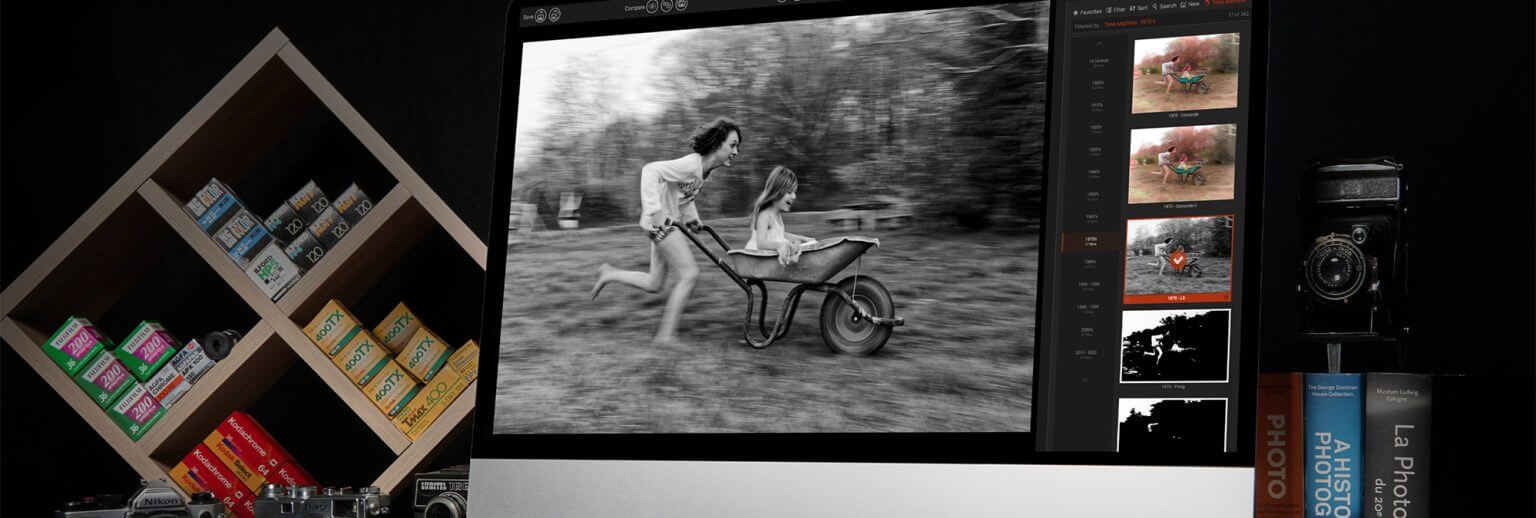FilmPack 7, DxO Labs’ tribute to analog photography, includes new editing tools, film rendering an enriched Time Machine mode, and more a personalized workflow
DxO Labs, creator of pioneering photo-editing software for over 20 years, is proud to present FilmPack 7, designed for digital photographers who love the timeless magic of film. It follows almost two decades of researching and digitizing the unique characteristics of classic film stocks in order to keep them alive in the digital era.
“At DxO, we love photography, FilmPack is our tribute to almost 200 years of analog history. Version 7 gives photographers who miss the magic of film the chance to immerse themselves — but with all of the convenience of digital.”
New for FilmPack 7
Luminosity Masks for unequaled editing
FilmPack 7, Luminosity Masks enable the fine adjustment of exposure, color, and contrast. Users can now target specific parts of the image for precise changes such as adding warmth to highlights, offering new levels of control.
Upgraded Time Machine mode
Spanning almost two centuries of history's greatest photographers and their favorite film stocks, DxO FilmPack 7’s Time Machine features a large collection of iconic photographs. Users can experience historical styles in context and then apply them to their own photos. Photographers can enjoy 22 new historical images and events, in addition to 26 new presets, bringing the total to 94.
25 new film renderings and digital styles
In addition to FilmPack already wide array of authentic film renderings, Version 7 features 5 new modern analog film renderings: Cinestill Redrum 200, LomoChrome Metropolis 200, Lomography Redscale XR 200, Berlin Kino
B&W 400, and Earl Grey B&W 100. 20 new digital effects, and a series of digital rendering see new styles of color and black-and-white modes on modern cameras from Nikon and FujiFilm.
FilmPack 7 brings the total number of adjustable high-fidelity color and monochrome film renderings to 89 and 82 digital styles.
Price and Availability
New customers can download Windows and macOS versions exclusively from the DxO website (https:// shop.dxo.com/en) at the prices listed below, a 30-day free trial is also available.
Owners of FilmPack 6 can take advantage of a special upgrade price:
To upgrade, customers should log into their customer account at https://shop.dxo.com/login_upgrade.php/ en. PhotoLab 7 does not require a subscription and can be installed on up to three computers.
Win a copy of ‘The Glow of Paris’
To celebrate the release of FilmPack 7, DxO has partnered with large format film photographer Gary Zuercher, who, for 20 years, has documented the beauty of Paris and its bridges at night in black & white. Customers who purchase FilmPack 7 will be eligible to win one of a 100 copies of his beautiful photo book. For more details visit https:// www.dxo.com/dxo-filmpack/contestglowofparis


A couple of years ago, DxO developers were looking specifically for people currently shooting or with prior images from a specific type of film (I don't recall which) to better evaluate their recreation for FilmPack. That suggests a fair bit of effort.
Personally, I prefer digital. In the end, even shots on film are going to be digitized, most likely. Granted, I had fun in the darkroom years ago...but I have no desire to go back.
I’m really not convinced that I can produce a better “quality” B&W image from B&W film (including MF) than I can from digital, other than the fact that with negative film we’re exposing for the shadows, and have (generally) huge highlight latitude, whereas in digital we are exposing to protect the highlights, which normally leads to a file that’s more closed down than a correctly exposed negative.
Ironically colour negative film is different, because of the above, but also the colour information that’s in negative film, when scanned well, with each pixel being scanned red, blue and green (unlike Bayer Array), does give more colour information, and this is very apparent in medium format.
Generally there seems to be a belief ( on the net) that monochrome film produces “better” B&W than digital; in my experience this isn’t the case, and indeed monochrome specialists like Sebastio Salgado are shooting on digital now, then writing the file to 5x4 film, and printing from that. The results can be spectacular.
Colour on the other hand, is different.
I agree that if someone wants the ‘film look’ then try shooting film, but unless you’ve shot film before be prepared for disappointment as it will take time to achieve the ‘look’ you were hoping for.